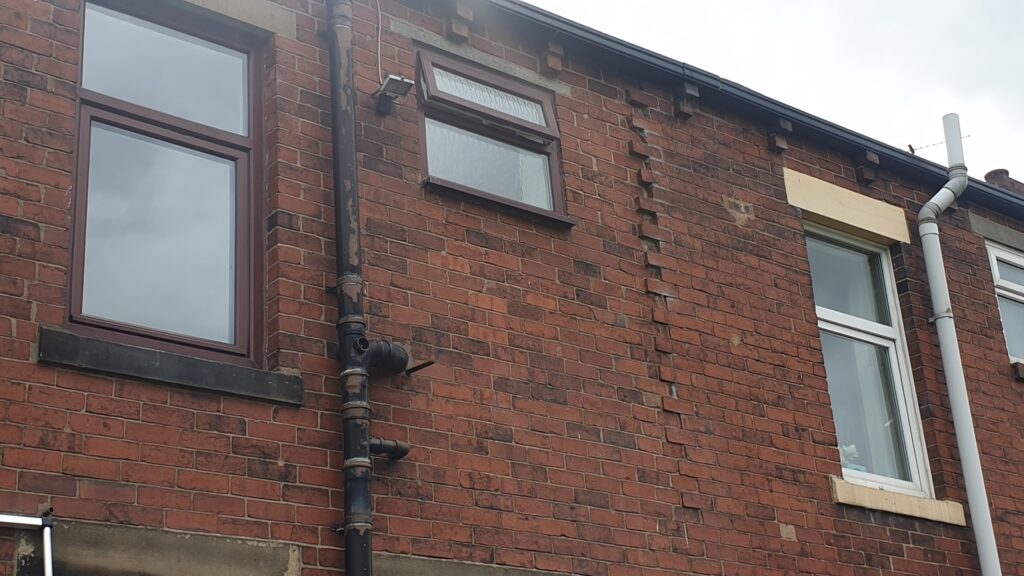
Cavity Wall tie failure can be a daunting defect to come up against with your property. Below we discuss what it is and why it happens in a little more detail.
Since the Victorian era cavity walls have been a traditional construction method within the UK. They are what it says on the tin; two leaves of brickwork separated with a small cavity in the middle. The reason; ultimately to stop moisture being transferred between the two skins in to your property, it also creates a thermal barrier to help with energy efficiency.
Cavity walls are ‘tied’ together at intervals to provide support and stability (basically so they don’t fall away from each other).
So if all cavity walls are tied together how there still be instability I hear you ask…. Well the problem being is that a lot of properties built before 1981 used cavity wall ties without any galvanizing which restricted the protection they have against corrosion. As we all know subjecting metal to moisture creates rust and corrosion over time.
So what are the signs that we look for when we believe there may be cavity wall tie failure?
Firstly we look for external cracking, this is caused from oxidization of the ties where the metal expands, it then can cause bulging of the outer wall.
To confirm in full many surveyors undertake an intrusive survey such as a borescope survey.
In the worst case scenarios, cavity wall tie failure can lead to partial collapse of the outer skin of brickwork if left untreated.
An experienced surveyor can spot signs of cavity wall tie failure and recommend remedial treatments. Remedial treatments tend to be either installation of replacement modern ties or the rebuilding of the outer skin where necessary depending on the severity.
Talk to one of our team today, who are all chartered and experienced building surveyors. Who can inspect your property and advise as necessary in the North West and across the UK.
